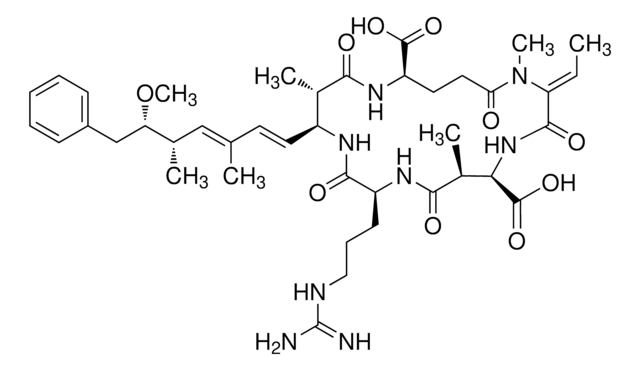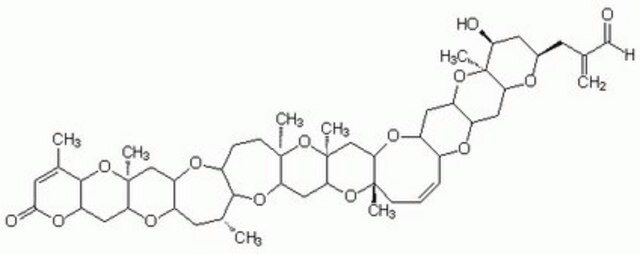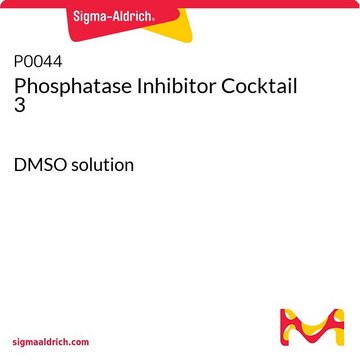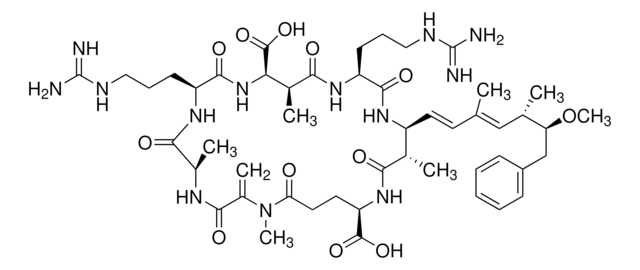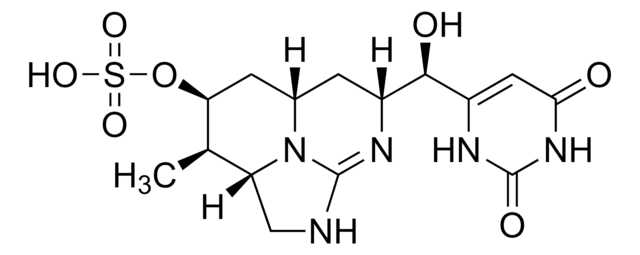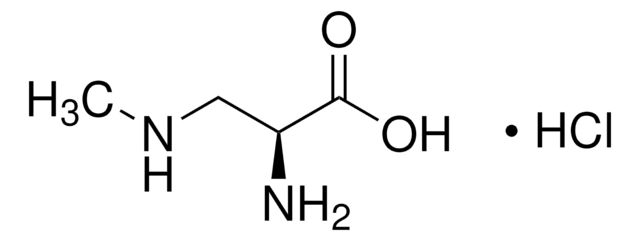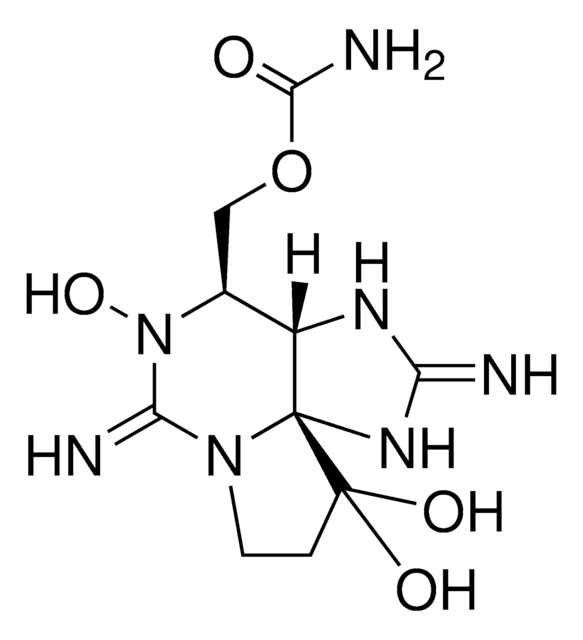32539
Nodularin solution
10 μg/mL in methanol, analytical standard
Sinonimo/i:
Cyclo[(2S,3S,4E,6E,8S,9S)-3-amino-9-methoxy-2,6,8-trimethyl-10-phenyl-4,6-decadienoyl-D-γ-glutamyl-(2Z)-2-(methylamino)-2-butenoyl-(3S)-3-methyl-Dβ-aspartyl-L-arginyl), Nodularin-R solution
About This Item
Prodotti consigliati
Grado
analytical standard
Livello qualitativo
Durata
limited shelf life, expiry date on the label
Concentrazione
10 μg/mL in methanol
tecniche
HPLC: suitable
gas chromatography (GC): suitable
applicazioni
cleaning products
cosmetics
food and beverages
personal care
Formato
single component solution
Temperatura di conservazione
−20°C
Stringa SMILE
CO[C@@H](Cc1ccccc1)[C@@H](C)\C=C(C)\C=C\[C@@H]2NC(=O)[C@H](CCCNC(N)=N)NC(=O)[C@@H](C)[C@@H](NC(=O)\C(=C\C)N(C)C(=O)CC[C@@H](NC(=O)[C@H]2C)C(O)=O)C(O)=O
InChI
1S/C41H60N8O10/c1-8-31-38(54)48-34(40(57)58)26(5)36(52)46-29(15-12-20-44-41(42)43)37(53)45-28(25(4)35(51)47-30(39(55)56)18-19-33(50)49(31)6)17-16-23(2)21-24(3)32(59-7)22-27-13-10-9-11-14-27/h8-11,13-14,16-17,21,24-26,28-30,32,34H,12,15,18-20,22H2,1-7H3,(H,45,53)(H,46,52)(H,47,51)(H,48,54)(H,55,56)(H,57,58)(H4,42,43,44)/b17-16+,23-21+,31-8-/t24-,25-,26-,28-,29-,30+,32-,34+/m0/s1
IXBQSRWSVIBXNC-HSKGSTCASA-N
Cerchi prodotti simili? Visita Guida al confronto tra prodotti
Categorie correlate
Descrizione generale
Applicazioni
- Surface and drinking waters by on-line solid phase extraction (SPE) and ultra high pressure liquid chromatography-tandem mass spectrometry (UHPLC-MS/MS).
- Sediments and pore waters by accelerated solvent extraction (ASE) and HPLC-MS/MS.
Avvertenze
Danger
Indicazioni di pericolo
Consigli di prudenza
Classi di pericolo
Acute Tox. 3 Dermal - Acute Tox. 3 Inhalation - Acute Tox. 3 Oral - Flam. Liq. 2 - STOT SE 1
Organi bersaglio
Eyes
Codice della classe di stoccaggio
3 - Flammable liquids
Classe di pericolosità dell'acqua (WGK)
WGK 1
Punto d’infiammabilità (°F)
51.8 °F
Punto d’infiammabilità (°C)
11 °C
Dispositivi di protezione individuale
Eyeshields, Faceshields, Gloves
Scegli una delle versioni più recenti:
Possiedi già questo prodotto?
I documenti relativi ai prodotti acquistati recentemente sono disponibili nell’Archivio dei documenti.
I clienti hanno visto anche
Il team dei nostri ricercatori vanta grande esperienza in tutte le aree della ricerca quali Life Science, scienza dei materiali, sintesi chimica, cromatografia, discipline analitiche, ecc..
Contatta l'Assistenza Tecnica.